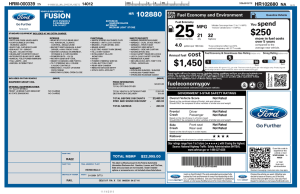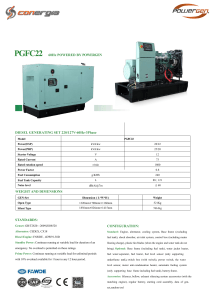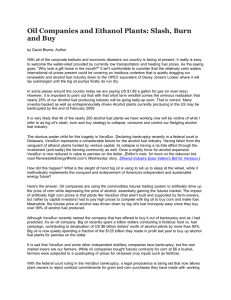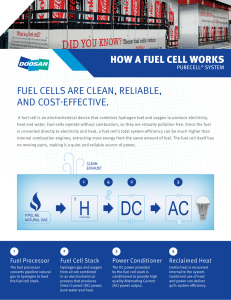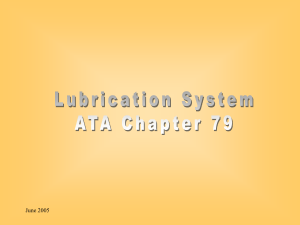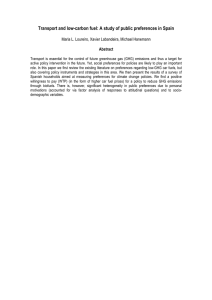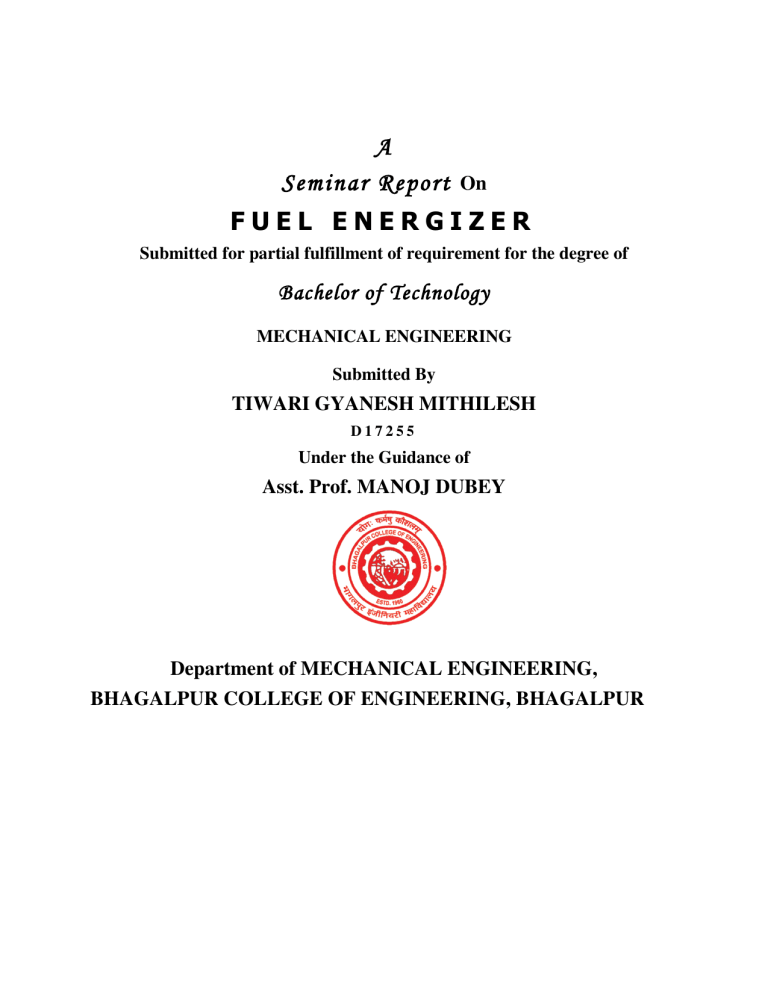
A Seminar Report On FUEL ENERGIZER Submitted for partial fulfillment of requirement for the degree of Bachelor of Technology MECHANICAL ENGINEERING Submitted By TIWARI GYANESH MITHILESH D17255 Under the Guidance of Asst. Prof. MANOJ DUBEY Department of MECHANICAL ENGINEERING, BHAGALPUR COLLEGE OF ENGINEERING, BHAGALPUR ACKNOWLEDGEMENT I have taken efforts in this presentation. However, it would not have been possible without the kind support and help of my mentors and many other persons directly or indirectly. I would like to extend my sincere thanks to all of them. I am highly indebted to Mr. MANOJ DUBEY SIR for their guidance and constant supervision and their support in completing the presentation. I would also like to express my special gratitude and thanks to college persons for giving me such attention and time. My thanks and appreciations also goes to my colleagues in developing the presentation and people who have willingly helped me out with their abilities. CONTENTS • Introduction • Fuel structure • How does incomplete combustion occurs? • Fuel Energizer • Effect of magnetic field on fuel structure • Working of fuel energizer • Where to install • Performance result • Comparison between catalytic converter and fuel energizer/Magnetizer • Advantages and Disadvantages • Conclusions • Reference ABSTRACT In this era of increasing fuel prices, here a device called „FUEL ENERGIZER‟ help us to reduce Petrol /Diesel /Cooking gas consumption up to 28%, or in other words this would equal to buying the fuel up to 28% cheaper prices. When fuel flow through powerful magnetic field created by Magnetizer Fuel Energizer, The hydrocarbons change their orientation and molecules in them change their configuration. Result: Molecules get realigned, and actively into locked with oxygen during combustion to produce a near complete burning of fuel in combustion chamber. INTRODUCTION Today‟s hydrocarbon fuels leave a natural deposit of carbon residue that clogs carburetor, fuel injector, leading to reduced efficiency and wasted fuel. Pinging, stalling, loss of horsepower and greatly decreased mileage on cars are very noticeable. The same is true of home heating units where improper combustion wasted fuel (gas) and cost, money in poor efficiency and repairs due to build-up. Most fuels for internal combustion engine are liquid, fuels do not combust until they are vaporized and mixed with air. Most emission motor vehicle consists of unburned hydrocarbons, carbon monoxide and oxides of nitrogen. Unburned hydrocarbon and oxides of nitrogen react in the atmosphere and create smog. Smog is prime cause of eye and throat irritation, noxious smell, plat damage and decreased visibility. Oxides of nitrogen are also toxic. Generally fuels for internal combustion engine is compound of molecules. Each molecule consists of a number of atoms made up of number of nucleus and electrons, which orbit their nucleus. Magnetic movements already exist in their molecules and they therefore already have positive and negative electrical charges. However these molecules have not been realigned, the fuel is not actively inter locked with oxygen during combustion, the fuel molecule or hydrocarbon chains must be ionized and realigned. The ionization and realignment is achieved through the application of magnetic field created by „Fuel Energizer‟. Fuel mainly consists of hydrocarbon and when fuel flows through a magnetic field, such as the one created by the fuel energizer, the hydrocarbon change their orientation and molecules of hydrocarbon change their configuration. At the same time inter molecular force is considerably reduced or depressed. These mechanisms are believed to help disperse oil particles and to become finely divided. This has the effect of ensuring that fuel actively interlocks with oxygen producing a more complete burn in the combustion chamber. The result is higher engine output, better fuel economy and reduction in hydrocarbons, carbon monoxide and oxides of nitrogen that are emitted though exhaust. The ionization fuel also helps to dissolve the carbon build-up in carburetor, jets, fuel injector and combustion chamber, thereby keeping the engines clear condition. Also it works on any vehicle or device (cooking gas stove) using liquid or gas fuel. FUEL STRUCTURE Hydrogen is the major constituent of hydrocarbon fuels. Hydrogen has DIPOLE MOMENT as it has a positive and a negative charge Hydrogen can occur in two isometric forms-Para and Ortho. It is characterized by the opposite spins of nucleus. • The representation of para and ortho form is: • The spin orientation has a pronounced effect on physical properties (electrical conductivity, density). • Orthohydrogen is more reactive than its parahydrogen counterpart. WHY DOES INCOMPLETE COMBUSTION OCCUR? Hydro carbons basically have a CAGE like structure and hence availability of oxygen is less. Hydrogen exists in its less reactive para state. Oxygen has 2 valence electrons and hydrocarbons have neutral molecular structure and hence they get repel each other resulting in incomplete combustion. FUEL ENERGIZER A FUEL ENERGIZER (MAGNETIZER) is a device which ionizes the fuel being fed through it. A magnetizer uses neodymium iron boron magnet. It is capable of producing strong magnetic field with the help of magnets. It is installed on cars, trucks immediately before carburetor or injector on fuel line. Key Features Of Fuel Energizer Increase fuel economy per liter Higher initial torque. Reduced knocking & detonation. Decrease smoke emission. Faster A/C cooling. No fuel wastage. Smooth running & long term maintenance free engine. EFFECT OF MAGNETIC FIELD ON FUEL STRUCTURE Molecules tend to align with the direction of magnetic field, when magnetic field is created. The axis of electrons aligned with the external magnetic field produces a fluctuating dipole moment. This has the effect of ensuring that fuel actively interlocks with oxygen producing a more complete burn in the combustion chamber. The result is higher engine output, better fuel economy and a reduction in the hydrocarbons, carbon monoxide and oxides of nitrogen that are emitted through the exhaust. WORKING OF FUEL ENERGIZER When hydrocarbon fuel (CH4) is combusted, the firstly the oxidation of hydrogen atoms will have electrons in their outer shell will takes place. Further carbon atoms are subsequently burned (CH4 + 2O2 = CO2+ 2H2O). Since it takes less time to oxidize hydrogen atoms in a high-speed internal combustion process, in normal conditions some of the carbon will be only partially oxidized; this is responsible for the incomplete combustion. Oxygen combines with hydrogen readily; however, the carbon-oxygen reaction is far less energetic. The optimum combustion efficiency (performance) obtained from the Magnetizer application on fuel is first indicated by the amount of increase in carbon dioxide (CO2) produced, which has been validated by state emissions control devices. The schematic diagram of Fuel Energizer is shown in figure The fuel flows through magnetic flow line & hydrocarbons change their orientation and molecules of hydrocarbon change their configuration. This has the effect of ensuring that the fuel actively interlocks with the oxygen, producing a more complete burn in the combustion chamber. The result is higher engine output, better fuel economy and a reduction in the hydrocarbons, carbon monoxide and oxides of nitrogen that are emitted through the exhaust. The ionization of the fuel also helps to dissolve the carbon build-up in carburetor jets, fuel injectors and combustion chambers, thereby keeping the engine in a cleaner condition. The working of sending unit is located in the fuel tank of the car shown in figure 4. It consists of a float, usually made of foam, connected to a thin, metal rod. The end of the rod is mounted to a variable resistor. A resistor is an electrical device that resists the flow of electricity. The more will be the resistance the less will be the current flow. In a fuel tank, the variable resistor consists of a strip of resistive material connected on one side to the ground. A wiper connected to the gauge slides along this strip of material, conducting the current from the gauge to the resistor. If the wiper is close to the grounded side of the strip, there is less resistive material in the path of the current, so the resistance is small. If the wiper is at the other end of the strip, there is more resistive material in the current's path, so the resistance is large. The Magnetizer's extremely strong magnetic field, with sufficient flux density to have the required affect on fluid passing through it, substantially changes the isomeric form of the hydrocarbon atom from its Para-hydrogen state to the higher energized, more volatile, ortho state, thus attracting additional oxygen. Fuel structure and properties, such as e.g. electrical conductivity, density, viscosity, or light extinction are changed; its macrostructure beneficially homogenized we attach the Magnetizer unit to the fuel line of an automobile (before carburetor, in tandem series, placed 1/4" apart, or in Fuel Injection Systems - on fuel line to the injectors + before the injection pump; make sure it is not in contact with the engine's metal parts), one can see an immediate (approx. after 5 min., 4-5 miles/6-8 kms upon start-up) drop in unburned hydrocarbons and carbon monoxide due to the magnetic conditioning of the fuel which makes it more reactive. Upon the Magnetizer installation (5-10 minutes thereafter) engine will undergo the socalled "Stabilization Period", i.e. the time of the gradual disappearance of prior carbon varnish sediments and the total magnetic saturation of all ferromagnetic metal parts of the feeding system between the installed energizer and the combustion chamber in order to fully activate fuel. The initial saturation lasts about a week while the complete engine cleaning from the carbon residue lasts about 30 to 70 days (old engines). WHERE TO INSTALL PERFORMANCE RESULT One of the main concern for magnetizer is to lower CO,HC and NOx level. The test is carried out over the period of 7 weeks and over the mileage of 9,653 km. The engine is fitted with three magnets of magnetic field 3000gauss,4500 gauss and 9000 gauss. • The stochiometric tests indicate reduction in hydrocarbon HC (unburned fuel) approx, 75%-92% and carbon monoxide(CO) up to 85% due to the use of magnetizer. • Brake mean effective pressure increases with air fuel ratio when high magnetic field is used. CO emission is reduced when magnetic field is applied. • Brake thermal efficiency of the engine increases when higher magnetic field is applied. A COMPARISON BETWEEN A CATALYTIC CONVERTER AND THE MAGNETIZER / FUEL ENERGIZER 1. Most catalytic converters require air pumps to initiate catalysis. Air pumps rob power from the engine, reduce fuel economy, and are costly to install. Catalytic converters with air pumps reduce gas mileage - the Magnetizer increases gas mileage and performance. 2. Catalytic converters require a light-off temperature to be attained before they operative (between 3 to 5 miles). Cold converter does not work, so the exhaust fumes right after start-up are equally toxic as without it. The Magnetizer is instantaneous. 3. Catalytic converters are subject to meltdown under rich gas mixtures - the Magnetizer is not. It is a fully permanent device. 4. The Magnetizer can easily be transferred from car to car with almost no labor. Converters cannot. 5. The Magnetizer units cost a fraction of the cost of the catalytic converter system. 6. Since catalytic converters reduce power and eventually go bad,they are subject to being removed; they are often not replaced because of the high cost and reduced engine performance. 7. Use of the unleaded gas does eliminate the problem of the most toxic lead compounds, but there is an increase in the air of other carcinogenic substances; the exhaust problem comes around. Very often unleaded gas is transported in the same tank trucks that carry "normal" gasoline with the lead additives. From daily practice we know that even trace quantities of lead are sufficient to destroy ("poison") a converter. As a result, the amount of toxic substances released to the atmosphere can subsequently increase. The Magnetizer works well and with excellent results on all types of fuel unleaded, as well as leaded gasoline, diesel, or liquid petroleum gas (LPG). 8. Catalytic converters have a finite lifetime under optimal conditions, shorter under adverse conditions. It is important to note that although it takes a bit of time for the Magnetizer fuel system to stabilize, one finds the "Magnetizer Energizer Systems" constantly work better and better as time goes on (see the comment on the "Stabilization Period" below). 9. The Magnetizer is totally friendly to the environment. The converter is not fully so. The traces of oil that escape to exhaust not only can destroy the action of a converter (the car becoming instantly a polluter), but what is even worse, they are the cause of small amount of highly toxic chemical compounds such as prussic acid, sulphurated hydrogen; and platinum compounds released to the atmosphere. ADVANTAGES Increase fuel economy per liter High initial torque. Reduced knocking and detonation Decrease smoke emission. Faster A/C cooling No fuel wastage Smooth running and long term maintenance free engine. Up to 28% Fuel saving on your mileage per litre DISADVANTAGES The only disadvantage is it gets its effect in vehicles after 1000km running. After 1000km the milage will be more. CONCLUSION • By establishing correct fuel burning parameters through proper magnetic means (Fuel Energizer) we can see that an internal combustion engine is getting maximum energy per liter as well as environment with lowest possible level toxic emission. • Fuel energizer saves fuel by increasing combustion efficiency, less CO is being emitted; there by, less fuel is being used. • THEREFORE FUEL ENERGIZER IS AN“AUTHENTIC WAY OF REDUCTION OF FUEL CONSUMPTION”. REFERENCE • Hargude N.V, Sawant S.M ; 2012 ;”Experimental investigation of four stroke S.I. engine using fuel energizer for improved performance and reduced emissions”;International jouranal of mechanical engineering and technology,Vol.3;pp.244-257. • Rajan garg,Ajay Kumar agarwal;2013;”Fuel energizer: The magnetizer”;International journal of innovative research and development”;vol 2; • 7. P.Govindasamy, S.Dhandapani “An Experimental Investigation on the effect of Magnetic flux to reduce emissions and improve combustion performance in a four- stroke catalytic coated sparkignition engine”, KSAE International Journal of Automotive Technology, Paper No. E2006079.Vol.8, November 5, 2007. • http://www.google.co.in
